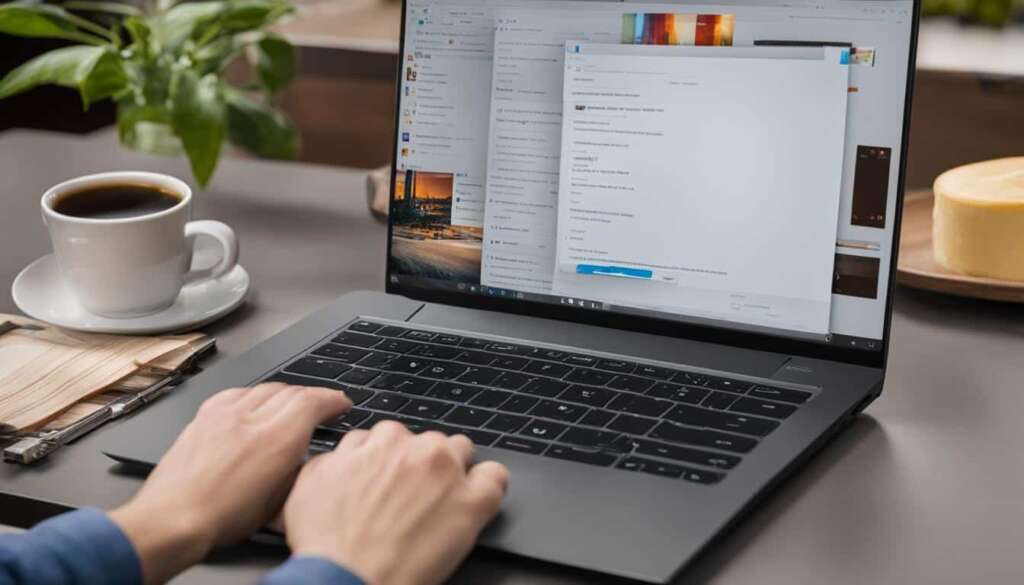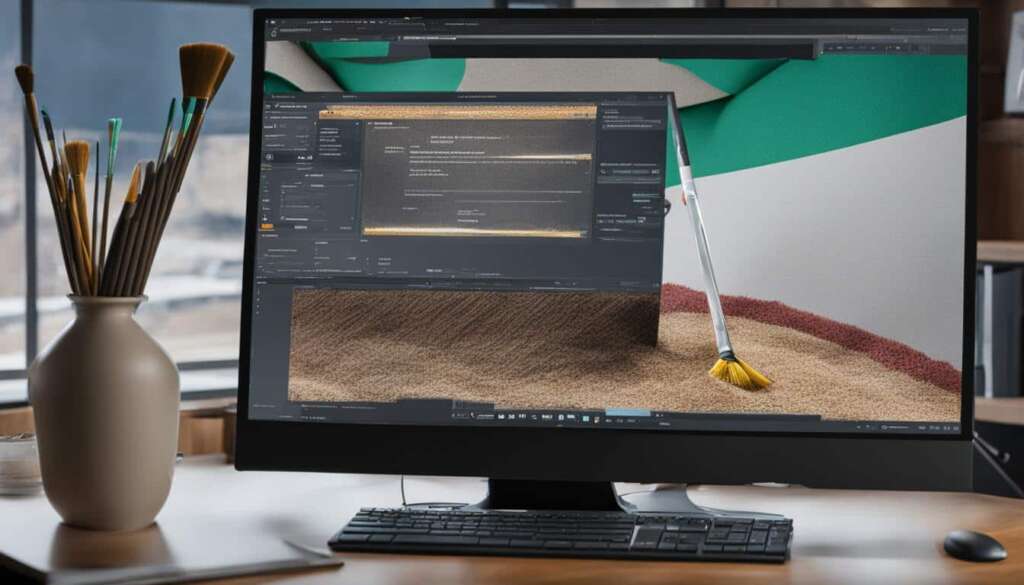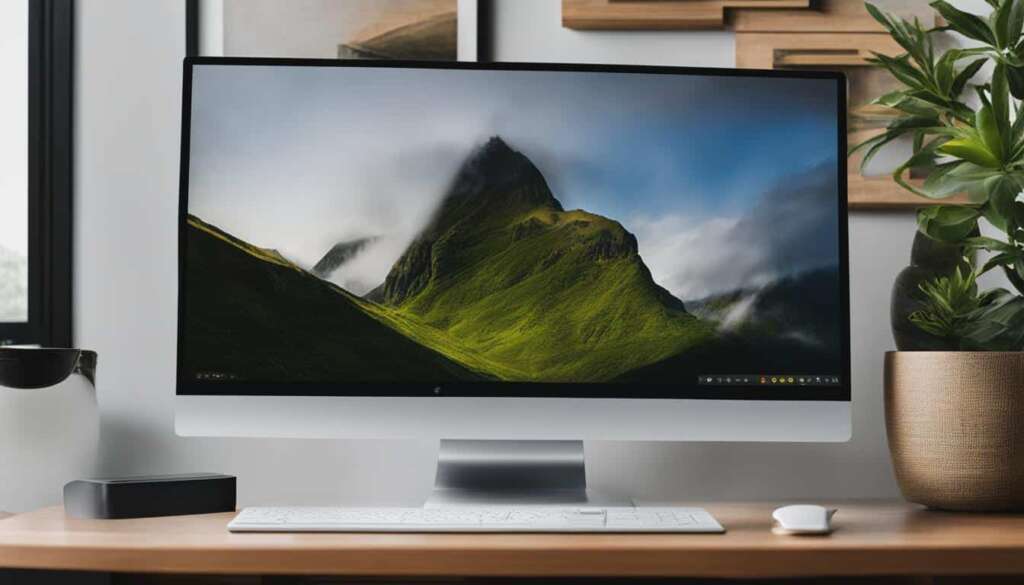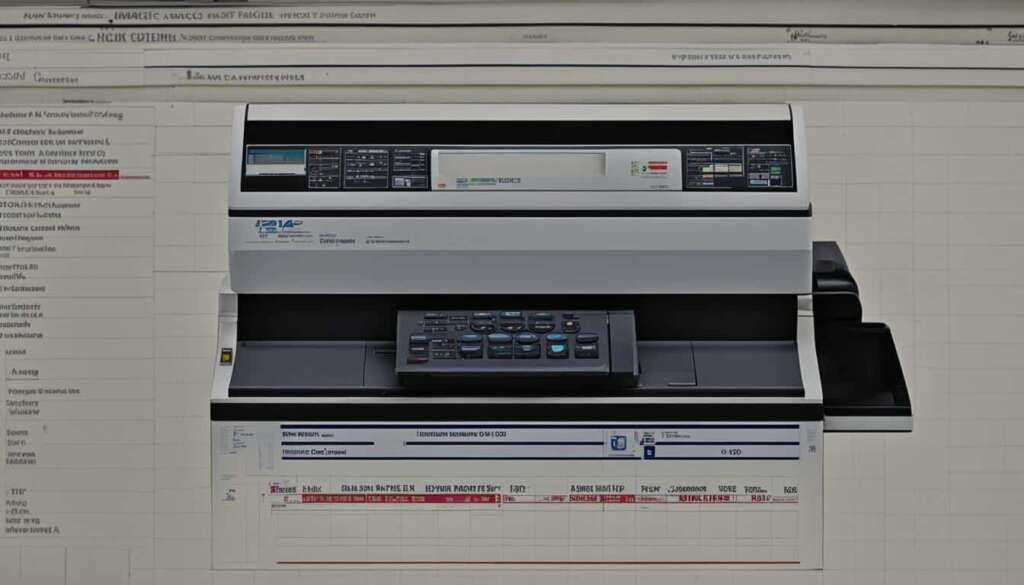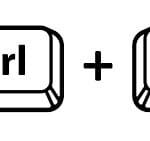Table of Contents
Are you looking to boost your laptop productivity and streamline your workflow? One fundamental skill that every laptop user should master is the ability to right-click. Whether you’re browsing the web, working on documents, or managing files, knowing how to right-click effectively can save you time and effort.
In this article, we will guide you through the process of right-clicking on a laptop without using a mouse. We’ll explore alternative methods that can enhance your productivity and provide accessibility options for individuals with mobility limitations or faulty hardware.
With the information and techniques we’ll share, you’ll be able to navigate and perform various functions on your laptop without solely depending on a mouse. So, let’s dive in and discover how to master laptop right-clicking in simple steps!
Using Keyboard Shortcuts and the Context Key
One method to right-click without a mouse is by utilizing keyboard shortcuts and the context key. Many keyboards have a Context key, which can be used to access the right-click context menu. By placing the mouse pointer over an item and pressing the Context key, you can open the right-click menu.
Additionally, keyboard shortcuts like “Shift + F10” can also perform a right-click function in programs like Word or Excel. These keyboard-based solutions provide accessibility and can be faster and more effective for professional workflow.
Keyboard shortcuts and the context key are versatile tools that allow you to navigate and execute right-click functions seamlessly. By mastering these shortcuts, you can enhance your productivity and streamline your laptop usage. Whether you’re working on documents, spreadsheets, or browsing the web, using keyboard shortcuts can save you time and effort.
Using Mouse Keys in Windows
Another method to right-click without a mouse is by using Mouse Keys, an accessibility feature in Windows. By enabling Mouse Keys, you can control the mouse cursor using the numeric keypad on your keyboard. Pressing the designated keys on the numeric keypad allows you to move the cursor in different directions and perform right-click actions. This feature can significantly improve Windows accessibility for individuals with mobility limitations or who prefer keyboard-based control.
Here is a step-by-step guide to enabling and using Mouse Keys on Windows:
- Open the Control Panel on your Windows computer.
- Navigate to the “Accessibility Options” or “Ease of Access” category.
- Look for the “Mouse” or “Mouse Keys” settings.
- Enable the Mouse Keys feature.
- Adjust the Mouse Keys settings to your preference, such as the cursor speed and acceleration.
- Save the changes and exit the settings window.
- Now you can use the numeric keypad on your keyboard to control the mouse cursor.
- Press the designated key to perform a right-click action.
Using Mouse Keys provides an alternative way to right-click without relying solely on a mouse. Whether your mouse is not working or you prefer the convenience of keyboard-based control, Mouse Keys can enhance your Windows experience.

| Method | Description | Accessibility |
|---|---|---|
| Mouse | Traditional right-click using a physical mouse. | Requires a functioning mouse. |
| Keyboard Shortcuts | Utilize keyboard shortcuts and the context key to open the right-click menu. | Accessible but requires knowing the specific shortcuts. |
| Mouse Keys | Control the mouse cursor using the numeric keypad on the keyboard. | Enhanced accessibility for individuals with mobility limitations. |
Using Accessibility Options in macOS
For macOS users, there is a convenient accessibility feature called Mouse Keys that allows you to navigate and control the cursor using keyboard shortcuts. By enabling Mouse Keys on your Mac, you can perform right-click actions without relying on a physical mouse.
To enable Mouse Keys on macOS, follow these simple steps:
- Open System Preferences
- Select “Accessibility”
- Under “Accessibility,” choose “Pointer Control”
- Click on “Alternate Pointer Methods”
- Toggle the first option for the mouse buttons
By enabling this option, you can now use specific keyboard shortcuts to perform right-click actions, providing a seamless and efficient way to navigate menus and access context-specific functions.
Moreover, macOS offers additional options to configure right-click behavior through the Mouse and Trackpad settings. By customizing these settings, you can further enhance your right-click experience and tailor it to your preferences.
| Steps to Enable Mouse Keys on macOS: | |
|---|---|
| Step 1: | Open System Preferences |
| Step 2: | Select “Accessibility” |
| Step 3: | Under “Accessibility,” choose “Pointer Control” |
| Step 4: | Click on “Alternate Pointer Methods” |
| Step 5: | Toggle the first option for the mouse buttons |
With these accessibility options available in macOS, you can confidently perform right-click actions without a physical mouse, making your workflow more efficient and accessible.
Alternative Methods for Right-Clicking on a Mac
When it comes to right-clicking on a Mac without a mouse, there are alternative methods that can come in handy. Let’s explore these options:
Performing a Secondary Click
If you’re using a Mac, you can achieve a right-click by performing a secondary click using the trackpad. Simply hold down the Control button on your keyboard and use the trackpad to click. This action will open the right-click context menu, allowing you to access additional options.
Enabling Secondary Click Function
Alternatively, you can enable the secondary click function in the Trackpad settings. By configuring this option, you can right-click on a Mac by performing a two-finger tap or by clicking a designated corner of the trackpad. This provides flexibility and convenience for accessing contextual menus and additional functionalities.
Using Force Click
For Mac users with Force Touch trackpads, there’s an additional method called Force Click. This innovative feature allows you to perform different actions by applying pressure with either one or three fingers on the trackpad. By customizing the Force Click settings, you can expand your options and enhance your productivity on a Mac.
Now that we’ve explored the alternative methods for right-clicking on a Mac, you can choose the one that best suits your preferences and workflow. Whether it’s performing a secondary click, enabling the secondary click function, or utilizing the Force Click feature, these options ensure that you can access the right-click functionality without relying solely on a mouse.

Alternative Methods for Right-Clicking on a Mac
| Method | How It Works |
|---|---|
| Performing a Secondary Click | Hold down the Control button on the keyboard and click on the trackpad |
| Enabling Secondary Click Function | Configure the Trackpad settings to perform a two-finger tap or click a designated corner of the trackpad |
| Using Force Click | Apply pressure with one or three fingers on a Force Touch trackpad to perform various actions |
Conclusion
Mastering the art of right-clicking without a mouse can significantly enhance your laptop productivity and offer accessibility options for individuals facing mobility limitations or faulty hardware. By utilizing keyboard shortcuts, the Context key, Mouse Keys in Windows, and accessibility options in macOS, you can effortlessly navigate and perform a range of functions without solely relying on a mouse. These alternative methods not only provide flexibility for right-clicking, but they also contribute to a more efficient workflow, allowing you to accomplish tasks more seamlessly.
Whether you encounter a mouse malfunction or simply prefer keyboard-based control, knowing how to right-click without a mouse is a valuable skill for laptop users. It empowers you to navigate through menus, access context-specific options, and perform various actions with ease. By familiarizing yourself with these alternative methods, you can optimize your laptop usage and increase your overall productivity.
So, the next time you find yourself without a mouse or in need of a more efficient way to right-click, remember the tips and techniques outlined in this article. Embrace the power of keyboard shortcuts, unleash the potential of the Context key, embrace the accessibility features of Mouse Keys, and explore the alternative methods available on macOS. With these laptop productivity tips in your arsenal, you can confidently conquer any task that comes your way, regardless of the limitations you may face.
FAQ
How do I right-click on a laptop without a mouse?
There are several methods to right-click without a mouse on both Windows and macOS operating systems. Let’s explore some alternative methods that can enhance your productivity.
How can I right-click using the keyboard?
You can use keyboard shortcuts and the context key to right-click without a mouse. Many keyboards have a Context key that can be used to access the right-click context menu. Additionally, keyboard shortcuts like “Shift + F10” can perform a right-click function in specific programs.
Can I use mouse keys to right-click on Windows?
Yes, you can use Mouse Keys, an accessibility feature in Windows, to right-click without a mouse. By enabling Mouse Keys, you can control the mouse cursor using the numeric keypad on your keyboard.
How do I enable Mouse Keys on Windows?
To enable Mouse Keys on Windows, you can navigate to the Accessibility Options in the Control Panel and activate Mouse Keys. This feature is available in Windows 7, 8, 10, and 11.
Can I right-click without a mouse on macOS?
Yes, macOS also offers a similar accessibility feature called Mouse Keys. By enabling this feature through the System Preferences > Accessibility > Pointer Control > Alternate Pointer Methods, you can control the cursor using keyboard shortcuts and perform right-click actions.
How can I right-click on a Mac using alternative methods?
On a Mac, you can perform a secondary click by holding down the Control button on the keyboard and clicking with the trackpad. Alternatively, you can enable the secondary click function in the Trackpad settings and right-click with a two-finger tap or by clicking a designated corner of the trackpad. Macs equipped with Force Touch trackpads offer additional actions by applying pressure with one or three fingers.
Why should I learn how to right-click without a mouse?
Mastering the art of right-clicking without a mouse can enhance your laptop productivity and provide accessibility options for individuals with mobility limitations or faulty hardware. These alternative methods not only provide flexibility for right-clicking but also contribute to a more efficient workflow.

